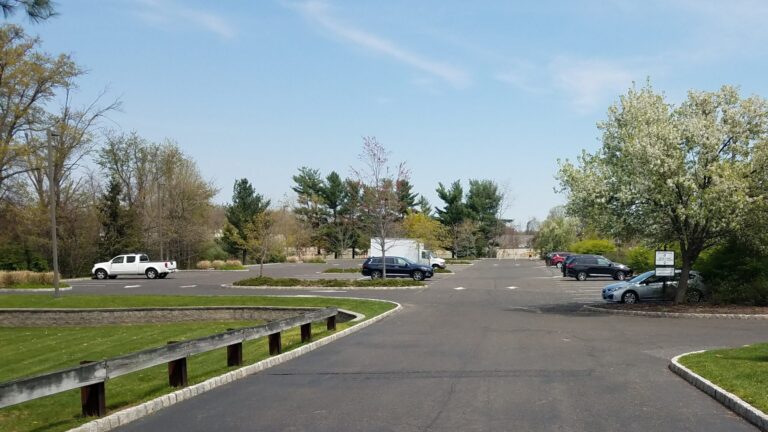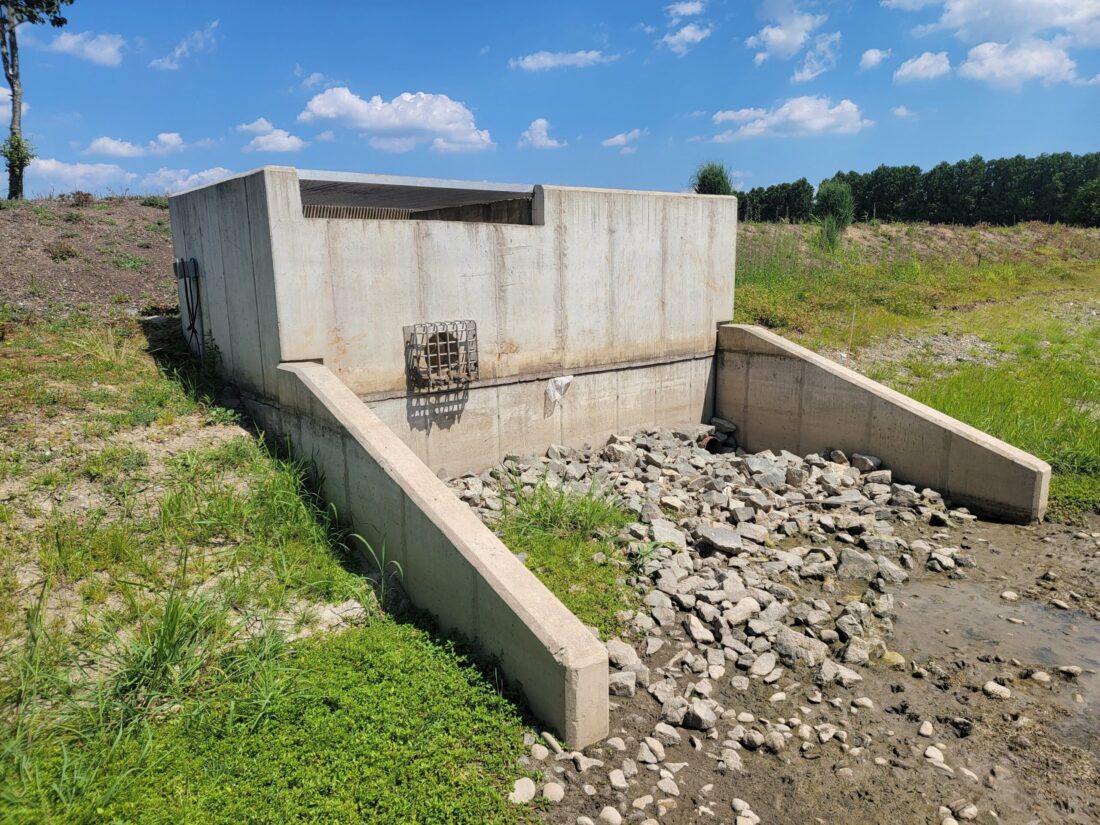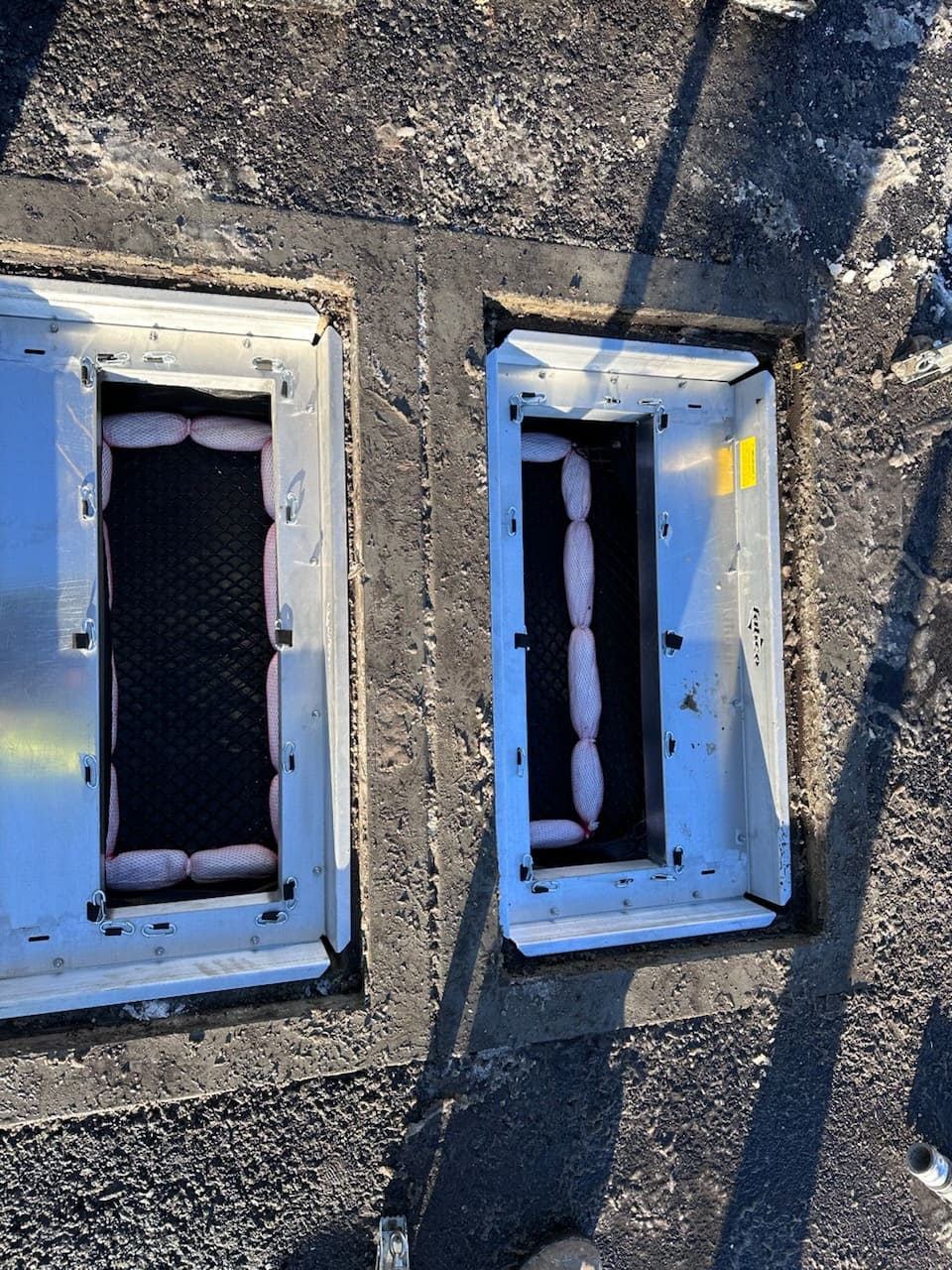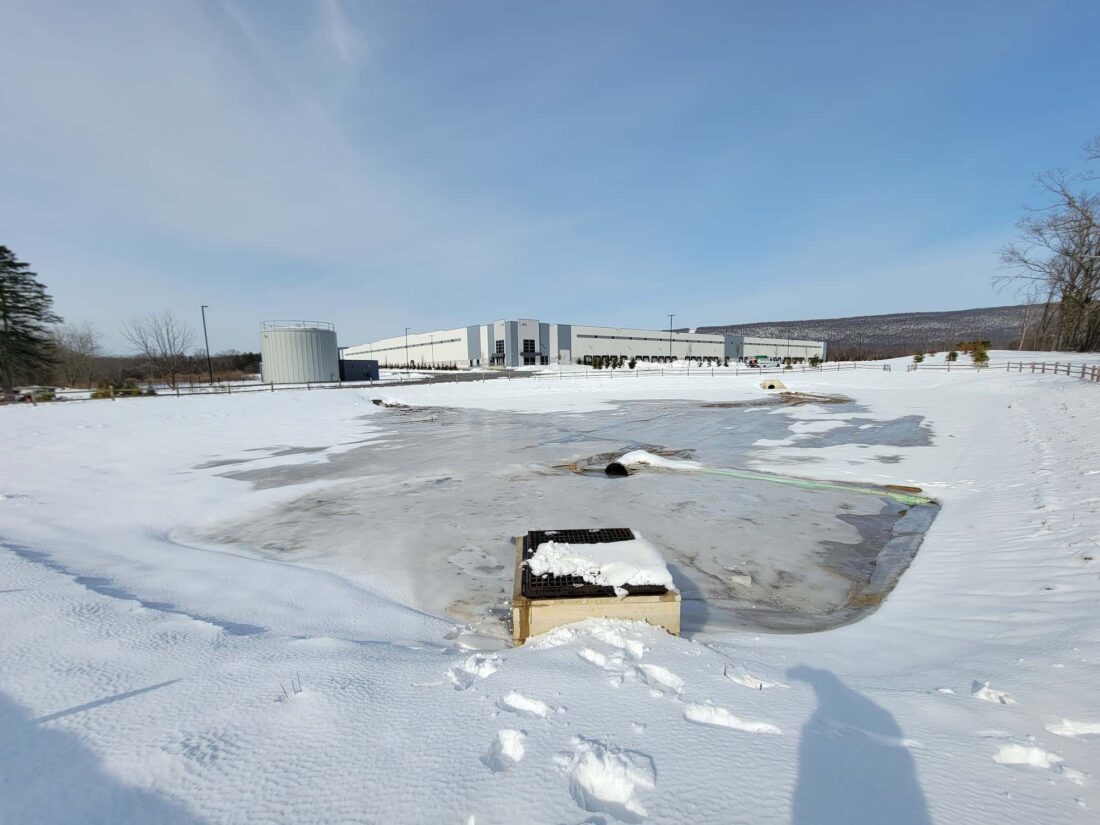
Stormwater Drainage Design for Parking Lots
Last Updated on September 16, 2023 by Stormwater Compliance Solutions
It is prevalent to face numerous challenges when preparing parking lot design options. Parking lots are often large, impermeable, and flat and can have a high runoff rate. Therefore, parking lot drainage and runoff must be treated for water quantity, and water quantity must be reduced after the water has been treated. A parking lot drainage design should know water quality and quantity needs using Best Management Practices (BMPs). One such practice of stormwater filter design is to use vegetated filter strips, as they can help rid the water of pollutants before it is stored and released. Read on to learn more about stormwater drainage design for parking lots, why parking lot water runoff can be harmful, and why filter strips are a best practice.
Quality of Runoff Water
Parking lots can be especially tricky regarding water quality, as water with high vehicular traffic produces more pollutants, such as oil, grease, hydrocarbons, metals, and total suspended solids (TSS). The majority of the pollutants attach themselves to the TSS, so removing the TSS also means the ability to rid the water of other pollutants, making stormwater management filtration a must. Stormwater drainage design for parking lots can include vegetative filter strips in pretreatment, specifically designed to remove TSS from the water.
How Do Filter Strips Work?
Vegetative filter strips can be designed from various vegetation communities, including turf grass, meadow cover, planted woods, and existing forests. Of the four, existing forest areas filter TSS best, removing approximately 80 percent. Meadow cover and planted woods remove roughly 70 percent and turf grass around 60 percent of total suspended solids. Removal rates can vary depending on the specific design of the filter strip and can also be affected by factors such as slope and length. Each state has particular requirements for vegetative filter strips. There are infiltration and filtration BMP design restrictions for different types of watersheds, even though field strips can otherwise use many types of vegetation.
However, across states and different topographies, vegetated filter strips can meet many stormwater BMPs, which is why they’re optimal for stormwater drainage design for parking lots and can be used as part of an overall pretreatment train. Some of these standards include:
- Peak flow. Filter strips do provide some peak flow attenuation.
- Recharge. No recharge credit.
- TSS removal. If greater than or equal to 50’ wide, then 45 percent TSS removal.
- Higher pollutant loading. Can be used as part of a pretreatment train (if lined).
- Discharges near or to critical areas. Can be used near cold-water fisheries and as part of a pretreatment train (if lined).
- Redevelopment. Works for pretreatment or as a standalone practice if there is sufficient land.
The filter strip is an evenly graded and stable area that uses biological uptake and filtration to remove pollutants from stormwater runoff and is an integral part of stormwater drainage design for parking lots. Runoff enters and moves through the strip as sheet flow. Therefore, slopes must be shallow for vegetative filter strips to maintain the sheet flow condition.
If appropriately designed, vegetative field filter strips slow runoff velocity and allow sediment in the runoff to either be filtered by vegetation or to settle. So, how does grass filter water? As water flows over grasses, the soil captures and retains sediment and pollutants, acting as a catch basin. While unsafe to consume, this process purifies surface water runoff as it moves over grass. Vegetated filter strips are also designed to meet the removal criteria for lower flow storms, often called water quality storms.
Filter Strip Design
Every vegetative strip design needs several design components to function properly. These include:
- Vegetation type
- Contributing drainage area
- Filter strip soil type
- Filter strip slope
- Filter strip length
For example, filter strips need healthy and dense vegetation to work and the correct length. The slope is a main design constraint to take into consideration. A filter strip that is too short will not be effective, and topography with a steeper slope requires a longer filter strip length to work.
Provided that a filter strip receives sheet flow, it requires very little maintenance after placement. Strips are most effective for storm events up to the one- to two-year event, also called water quality storms.
Water Quantity
Water quantity is also an essential factor in addition to water quality. Strips are not a means for quantity control and may provide small volumetric losses from evapotranspiration and infiltration. However, after water is discharged from the parking lots, that water must be detained to provide flow rate reductions for the site.
The 2-, 10-, and 100-year storms must be reduced by their respective regulatory reductions. The cleaned water is usually stored above ground or underground in basins where the water is released slowly into the environment.
The Benefits and Disadvantages of Filter Strips for Stormwater Drainage Design:
As with all aspects of stormwater drainage design for parking lots, vegetative filter strips have apparent benefits but also some limitations. Some of the benefits of filter strips are:
- Removes sediment
- Slows runoff velocities
- Requires little maintenance
- Reduces runoff volumes
- Reduces peak flows
- Not an entrapment hazard for wildlife
- Works in residential settings and parking lots
- Is an effective pretreatment for bioretention cells
- Can be a piece of an entire runoff conveyance system with other BMPs
How low maintenance are vegetated filter strips? Mowing the grass, removing sediment from the toe of the slope or level spreader, and reseeding bare spots only need to be performed as required. Inspecting the level spreader for sediment buildup and the vegetation for signs of erosion, bare spots, and overall health has to be performed six months after placement and only once per year thereafter.
There are also some limitations with filter strips, just as there are with other stormwater drainage designs for parking lots:
- Efficiency depends on design and vegetation type
- Concentrated flows can erode the area
- Best on slopes that are 6 percent or less
- Can be an insufficient retrofit option with large land requirements
Overall, vegetative filter strips are an important part of the stormwater drainage design for parking lots, effectively reducing pollutants, and are safe for the wildlife around them.
Contact one of our engineer’s to discuss your parking lot design and BMP choice at [email protected]




